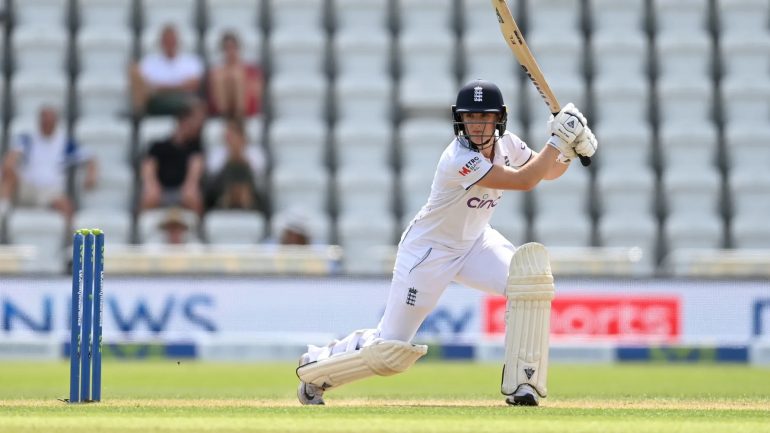Without thinking too hard, I can offer you: French cricket in the back garden; tip-and-run; both these, but removed to the beach, the Hundred (soon to be replaced in turn by the Fifty and the Twenty, I suspect; T20s, ODIs; afternoon club cricket, one-day club cricket, 3-day cricket, the 4 or 5-day test match, ‘endless’ test cricket (play to a finish!) – and there are many more.
The rarest type, as played by the elite, is the women’s test. It used not to be so, but has become an endangered species over the past decade or two.
So the recent match in Chennai proved a real rarity. It involved two nations, India and South Africa, agreeing to indulge themselves.
First the completed scores:
India: 603-6 declared (Verma 205, Mandhana 149) and 37-0
South Africa: 266 (Kapp 74, Luus 65, Rana 8-77) and 373 (Wolvaardt 122, Luus 109)
India won by 10 wickets
Player of the match: Sneh Rana (8-77 and 2-111)
Venue: M. A. Chidambaram Stadium, Chennai
A mere glance at those scores, and we sense the vast gap there is between the test-match arena and the commoner forms of the game.
Some Women’s Test Records achieved there:
292, the highest Indian opening partnership
525, the highest total in a single day
8 sixes by Shafali Verma, the most in an innings
140: the most runs in boundaries by an Indian woman (Verma)
603, the highest ever innings, 28 better than Australia’s previous record
Sneh Rana’s analysis 25.3-4-77-8 made her the third bowler to take 8 in an innings, but the only one in the first innings; she claimed 10-188 in the match
143, the highest 5th-wicket partnership (Kaur, Ghosh)
317, Marizanne Kapp becomes the most successful SA batter in tests
190, SA’s highest 2nd-wicket partnership (Wolvaardt, Luus)
Other oddities
Despite the hugeness of India’s first innings, no bowler sent down more than Nonkululeko Mlaba’s 26.1 overs with her left-arm slows. India needed only 115 overs to pass 600.
Sharma batted for 288 minutes in her first innings. How many Hundred matches might a player need to equal that total?
Unlike the other stats, in their first innings SA’s batters 7-11 returned the following totals: 0, 5. 1*, 1, 2 – just like any T20 match.
So rare are women’s test matches that all the five officials were Indian. No question of flying in top independent umpires.
Is this the dawn of a new test-match age?
On balance I feel the answer is no. We have now seen four nations committing themselves to at least one test in the past two years (add in Australia and England). But for any increase, many improvements are needed. Amongst others:
1 Far more red-ball cricket. How many of the players could claim they were familiar with a ball that colour? This was a central criticism Laura Wolvaardt aimed at her national board.
2 Far more multi-day cricket.
3 That in itself requires a much more professional approach; players available through contracts to avoid the need to moonlight in other jobs.
4 A quite different type of fitness is needed in multi-day cricket. The story is told of (Sir) Geoff Hurst, England hat-trick scorer in the world cup final of 1966 and also a handy club cricketer, playing one 3-day game for Essex in 1962. He chaffed his mates pre-match about their levels of fitness. They chaffed back: ‘You wait till the third afternoon.’ By then he was willing to agree with them.
Test cricket was given that title for a reason: it is exhausting, physically and mentally.
5 New Zealand have already made plain their unwillingness to take part in tests. Given the tiny number of nations at elite level, it reduces the chances of expansion considerably. The NZ board turned down flat England’s urgent plea for a test during the current series.
6 The gaps in attainment across the cricketing world are all too evident. Extending the lengthiest format would only exaggerate them.
7 Worldwide the taste is for immediate, short-lived excitement. Superstar one day; ‘never heard of him/her’ the next. Hence the ECB’s preference for the shortest match-format yet dreamed up for public consumption. They reckon only that is likely to keep the crowds coming in. Attendances at this season’s RFT Trophy and CE Cup matches have not been encouraging.









